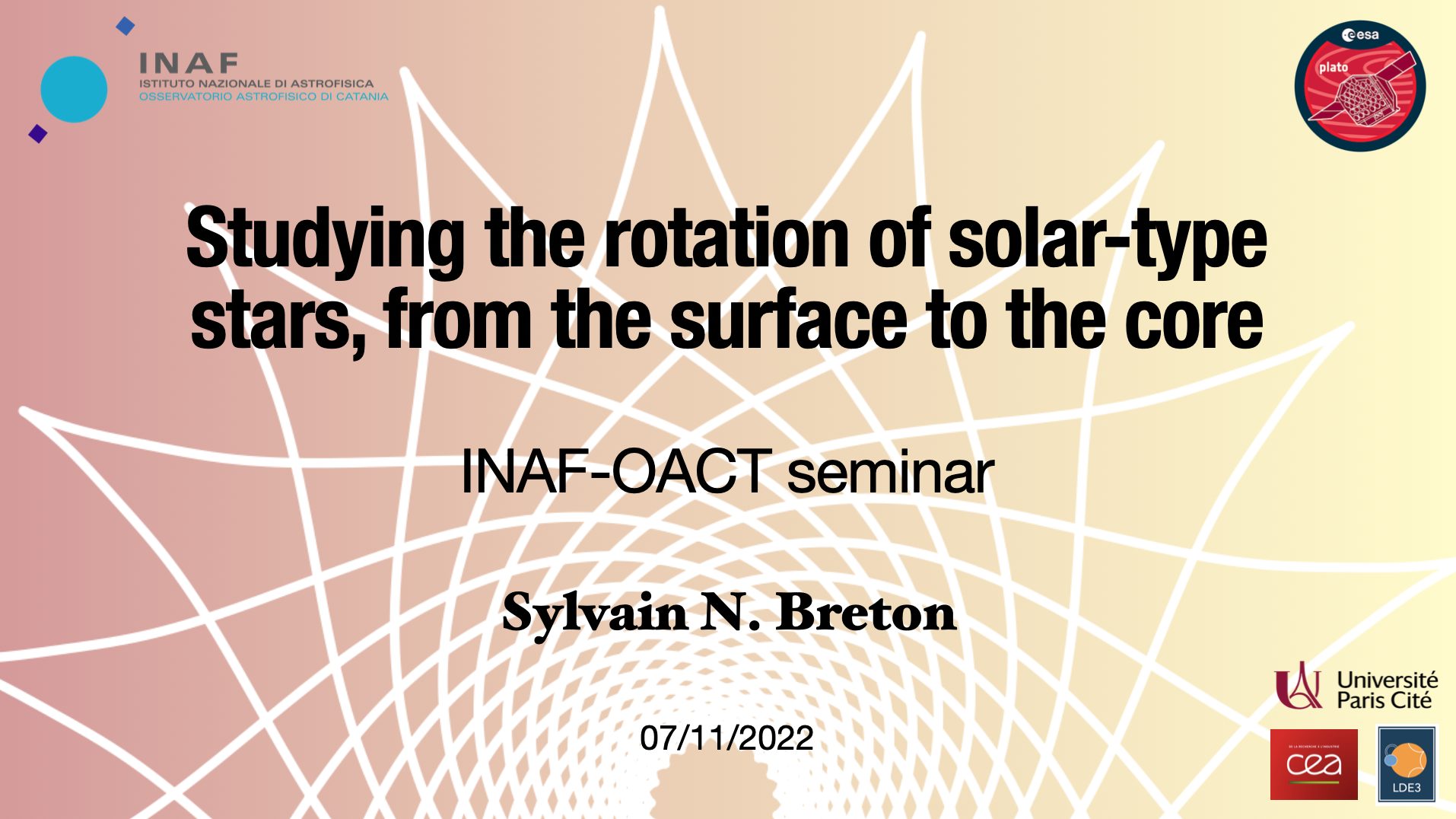
- Questo evento è passato.
Studying the rotation of solar-type stars, from the surface to the core

DATE: Monday, November 7, 11:00 a.m.
ORGANIZER: INAF OACT
LOCATION: AULA OVEST (INAF-OACT) – Audience in-person max 20
Link for the remote audience:
https://meet.google.com/wvf-uwxo-oyj
SPEAKER: Dott. Sylvain Breton (INAF – Osservatorio Astrofisico di Catania)
ABSTRACT:
Being able to constrain the rotation profile, both radial and latitudinal, of main-sequence solar-type stars, from the surface to the core, is a fundamental problem if we want to improve our understanding of stellar evolution (especially in order to get better constraints on stellar ages) and of the interactions of stars with their environment. As of today, the core rotation profile of the Sun and other main-sequence solar-type stars remains a mystery. This is due to the absence of clear detection of gravity modes (g modes), which are evanescent in convective regions, and therefore have very low-amplitude at the surface of the convective envelope of main-sequence solar-type stars. However, large-scale photometric surveys of these past years have been able to provide us valuable insights on the rotational dynamics of the surface and the upper regions of the stars, thanks to acoustic mode (p modes) asteroseismology and/or the characterisation of photospheric active regions.
In this seminar, I will first present the machine learning methodology ROOSTER that I developed in order to analyse surface rotation in the light curves collected by the Kepler mission. This tool was used to build what is the largest photometric catalogue of surface stellar rotation available today, opening many new perspectives for statistical study of the dynamics of the convective zone of solar-type stars, through the characterisation of photospheric activity index and the estimation of the Rossby number, a key parameter to constrain dynamics of rotating fluid. ROOSTER is currently being implemented in the MSAP4 module of the PLATO mission analysis pipeline. In order to assess the possibility to probe deeper into main-sequence solar-type stars, I will then discuss the perspective of detecting stochastic g modes (excited by convective motions) in late F-type stars, which are solar-type pulsators with a convective envelope shallower than the one of the Sun. For this purpose, I used the ASH code to perform several deep-shell 3D hydrodynamic simulations of a 1.3 Msun late F-type star. These simulations are the first 3D simulations of F-type stars including the radiative interior in the simulation domain. I will highlight the influence of rotation on the increased excitation of the internal gravity waves giving rise to the modes. I will show that, even of low amplitudes, g-mode signatures are detectable at the top of the convective envelope in the simulations. To connect modelling with observation, I will finally present an attempt to detect such signatures in late F-type stars observed by Kepler. A thorough analysis of the power spectra of stars in the selected working sample allows selecting several candidates. In the framework of this task, I will also explain how the characterisation of the photometric signature of several non-transiting companions led me to consider the possible role that a substellar companion can play in the excitation of g-modes for main-sequence solar-type stars.
A few rules:
— access the virtual room with the microphone and camera switched off.
— for questions leave a message in the chat and the answers at the end of the webinar.